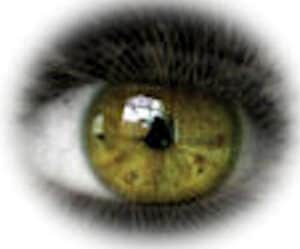When it comes to therapy for the visually impaired, factors such as fear, anxiety, depression, and the concept of secondary gain often play significant roles in resistance.
Rehabilitation therapy empowers those with visual impairments to utilize residual vision alongside non-optical devices, optical aids, and cutting-edge technology for a more fulfilling life. This educational process equips individuals with compensatory techniques and tools, enabling them to pursue their educational, work-related, and daily living goals effectively.
This collaborative effort involves eye care providers, therapists, and the visually impaired individual. However, successful rehabilitation hinges on the willingness of the low vision student to adapt, a process complicated by psychological and social factors.
How Depression Affects the Rehabilitation Process
In the realm of adapting to visual impairment, I believe depression stands as the primary obstacle. Research has consistently shown a strong link between vision loss and depression, particularly among older adults. As highlighted in a JAMA Ophthalmology article, “vision loss is among the most common chronic conditions associated with depression in old age.” ( Ref. article JAMA Ophthalmology )
)
The experience of losing vision often leads to a cascade of frustrations, fears, and anxiety, leaving individuals feeling helpless and mired in low self-esteem. The outlook on life dims, and the weight of a visually impaired existence can plunge one into despair and depression.
My exploration into the acceptance of vision loss has underscored that depression is a natural part of the journey from initial shock and fear to eventual acceptance, adjustment, and adaptation. Detailed insights on this process can be found in articles such as “The Adjustment Process.“
However, navigating this journey is far from easy. For some, emerging from the emotional depths of depression may never come. The complexity goes beyond vision loss alone, intertwining with age, other health conditions, relationships, living arrangements, financial stability, and even substance abuse.
Identifying depression is the crucial first step towards transitioning to acceptance. Successful rehabilitation services must address these psychosocial needs.
Referring individuals for counseling to manage depression should go hand-in-hand with learning new adaptive skills for life with a visual disability.
Without this counseling, feelings of helplessness, loss of independence, and low self-worth can significantly impede the rehabilitation process.
How Fear can Make the Visually Impaired Resistant to Therapy
Fear, both big and small, can create significant barriers for the visually impaired in therapy. Big fears encompass concerns about navigating the city safely, maneuvering through complex office buildings or airports, and grasping information without the ability to see details — the worry of “do I look foolish?” On the other hand, small fears creep in with thoughts like “do others perceive me as different?” and “did I miss something? Will I need to explain myself to strangers?”
For many, the intricacies of low vision technology can be daunting, especially if the multitude of buttons and features are unidentifiable or their purpose unclear. This fear often stems from the fear of failure. Similarly, adapting in the kitchen or workplace can seem overwhelming, leading to fears of not being able to learn or making a costly mistake.
Why Anxiety Causes Avoidance
Anxiety often thrives in social settings, particularly among acquaintances or strangers. While interactions with friends and family might not trigger much anxiety, the fear of how others will perceive someone with low vision looms large. Questions arise: Do they truly understand the challenges of low vision? Will I need to repeatedly explain my condition, drawing unwanted attention? The tiresome cycle of explaining legal blindness yet functional sight repeats, bringing anxiety about whether I’ll be seen as I was before losing vision, or if I’ll be pitied, treated differently, or judged as less capable. Should I just try to pretend everything is fine?
This anxiety can lead to avoidance as a coping mechanism. The thought process becomes, “If I avoid certain situations, I’ll feel more comfortable and won’t risk appearing foolish. Since I can’t see, I simply won’t participate.”
The Importance of Goals
Setting goals in the rehabilitation process is a collaborative endeavor. While the therapist provides options and solutions, it’s important for the visually impaired individual to voice their needs for adaptation and express which tasks hold their interest. For instance, someone undergoing training in cooking and laundry may lack enthusiasm if their personal aspiration is to return to gardening and enjoying television.
This collaborative approach ensures that the rehabilitation efforts align with the individual’s passions and aspirations, enhancing motivation and engagement in the process.

The eye care specialist and therapist set goals for the rehabilitative process. Goals are things like:
- reading
- writing,
- cooking,
- household tasks
- personal care
- mobility
- and the use of technology.
Setting goals in the rehabilitation process is a collaborative endeavor. While the therapist provides options and solutions, it’s crucial for the visually impaired individual to voice their needs for adaptation and express which tasks hold their interest. For instance, someone undergoing training in cooking and laundry may lack enthusiasm if their personal aspiration is to return to gardening and enjoying television.
This collaborative approach ensures that the rehabilitation efforts align with the individual’s passions and aspirations, enhancing motivation and engagement in the process.
The Phenomenon of Secondary Gain
Secondary gain is a psycho-social concept that delves into the perceived benefits of a disability for the individual affected. While a disability undoubtedly presents challenges, secondary gain refers to the subtle sense of satisfaction and advantages experienced by the disabled person due to their condition. It’s where the physical impact of vision loss meets its psychological counterpart.
These benefits can range from small conveniences, such as others taking on tasks or reduced work responsibilities, to significant advantages like financial compensations.
Consider this example illustrating secondary gain for someone with visual impairment: Imagine an individual experiencing central vision loss, struggling to see details like mail, bill payments, and kitchen appliance dials. They share these difficulties with family and friends, who eagerly offer assistance. Despite still having usable vision, this individual begins to appreciate the extra attention and care from loved ones. Over time, they might even unintentionally exaggerate the extent of their disability, inadvertently entrapping their willing helpers as caretakers.
However, intervention can provide new avenues. When their optometrist connects them with an occupational therapist specializing in visual aids and adaptive techniques, newfound independence becomes possible. Suddenly, alternative options for managing these tasks emerge. Yet, this newfound independence might challenge the status quo. Family and friends, realizing the visually impaired person’s potential for regaining self-sufficiency, may withdraw the extra help and attention they were offering.
Secondary gain can take many forms:
- The disability can be used as a means for work avoidance.
- It is also a good way to gain sympathy.
- It can be used as a means to justify not doing activities they do not want to engage in like cooking, taking the garbage out, watching the children, volunteer work, etc.
- The disability can be used as an excuse for avoiding social gatherings and activities resulting in a form of self-isolation.
- The disabled may feel they have a good reason to give away responsibilities and make themselves more dependent.
- They may also use their disability to increase interpersonal attachments and receive more care-taking.
- or use their disability to control, coerce, or just to get their way.
It’s important to recognize that not all visually impaired individuals utilize secondary gains, consciously or intentionally.
Many low vision patients may not even realize they are benefitting from secondary gains. This isn’t to say that their actions are deliberate or malicious; often, it’s someone close to them or a perceptive therapist who recognizes this pattern. Identifying this phenomenon is crucial, as it sheds light on why an individual might seem to stall in the rehabilitation process.
Keep in mind, while some of these attributes of secondary gain described above can be attributed to behaviors of the visually disability, there could also be underlying medical conditions or mental health disorders at play.
Secondary Gain Can Reduce Motivation to Adapt
Adapting to a disability often translates to increased difficulty and extended effort. It requires the disabled individual to acquire new skills and techniques. However, the visually impaired may resist utilizing visual aids if doing so risks losing the perceived benefits of attention, concern, sympathy, and dependency.
While rehabilitation specialists and doctors champion services and technologies that promote mobility and independence for low vision patients, the individual’s perspective may differ due to secondary gains. These secondary gains can underlie a person’s lack of motivation to embrace change and rehabilitation efforts..
In the End… Getting Help
The stress of vision loss, coupled with feelings of depression and grief, alongside the nuanced impact of secondary gain, can be effectively managed by psychiatrists and psychologists. Therapists often identify secondary gains when they notice consistent resistance to necessary changes for successful rehabilitation.
Seeking evaluation and support from mental health professionals can significantly aid in managing the emotional toll and navigating interpersonal relationships for those with disabilities.
See my other article on depression and anxiety: Low Vision Depression and Anxiety
Your life does not get better by chance, it gets better by change.
Jim Rohn

